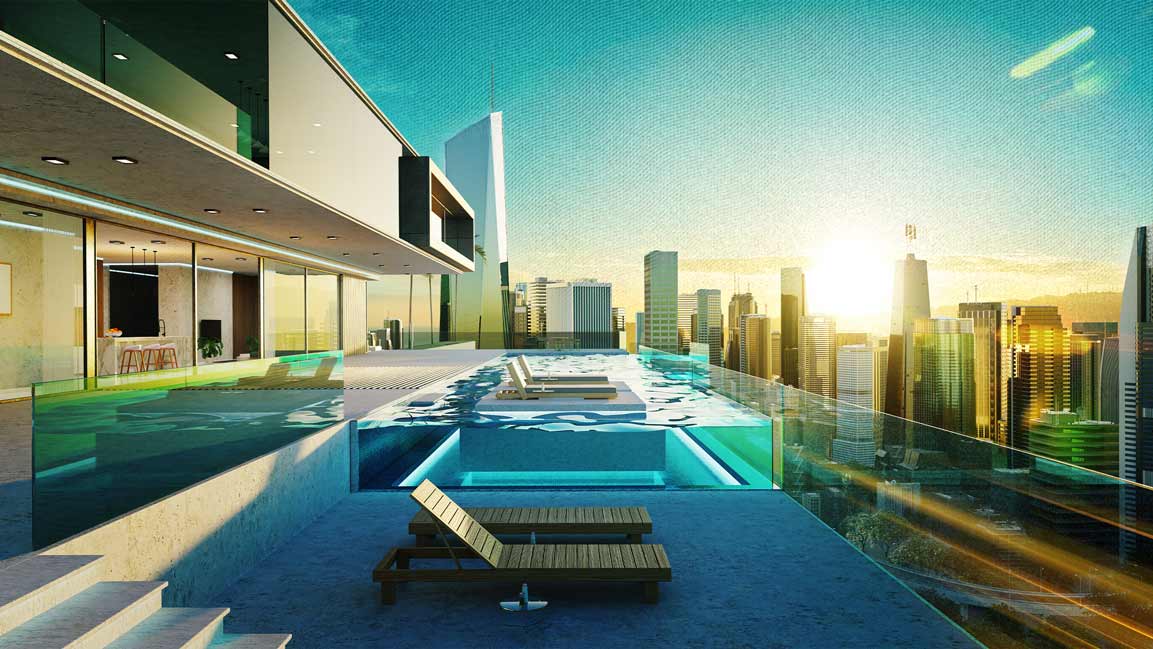- | 9:00 am
Sold! What’s driving the demand for branded residences in the Middle East?
Experts say demand for branded residences signifies an evolution in how luxury living is perceived and desired in the region

Demand for luxury homes in cities like Dubai, Abu Dhabi, Doha, and Riyadh shows little sign of abating. Over the past few years, super-rich from all over the globe have been on a spending spree on luxury real estate in the region, snapping up trophy homes. The recent trend is branded residences, offering a unique blend of high-end living spaces with the service and prestige associated with well-known luxury brands.
“The demand for branded residences in the region, particularly in cities like Dubai, is robust and continuously growing,” says Diana Nilipovscaia, CEO at MERED, a Dubai-based premium real estate developer.
“According to data from Global Branded Residences, Dubai experienced an impressive 410% growth from 2014 to 2024, indicating a significant shift in preferences towards luxurious, urban living environments. This remarkable surge underscores the evolving lifestyle choices of high-net-worth individuals (HNWIs), who increasingly seek opulent residences that offer prestige and convenience,” Nilipovscaia adds.
Beyond consumer appeal, there’s interest from investors as well. According to Adam Price, CEO of Select Property, branded homes offer compelling investment opportunities with a predicted 12% annual growth up to 2026. “The association with renowned brands instills investors’ confidence, driving demand and potentially increasing property values over time.”
WHY IS THE DEMAND GROWING?
Several factors are driving the demand for branded luxury properties. “They offer unparalleled service and go beyond simple property ownership, drawing in high-networth individuals who appreciate exclusivity and a luxury lifestyle that standard real estate options don’t often have,” says Price.
Residents of branded residences benefit from a range of amenities and services, including on-demand spa treatments, personalized concierge services, exclusive access to high-end facilities, in-residence dining from gourmet restaurants, and sometimes even access to personalized wellness and spa treatments. The idea is to create a living experience that mirrors the luxury and attentiveness of a five-star hotel stay, seamlessly integrated into everyday living.
Price says there is a long-term appreciation coupled with brand allure because the property’s value is “reinforced over time” by the enduring prestige and brand expectations. It outshines its non-branded luxury counterparts by a 7.6% rental yield.
Additionally, he says, there is a noticeable increase in investor demand for branded residences, indicating buyers are becoming more interested in premium homes with prestigious brand affiliations.
“All things considered, the prestige of the brand, high-end features, potential for rental income, and growing market presence make branded residences an appealing option for buyers looking to enhance their property portfolio, enjoy a luxury lifestyle, and earn profits in the real estate market,” says Price.
THE ROLE OF SUSTAINABILITY AND TECHNOLOGY
Sustainability is a significant element in branded residences, reflecting a growing demand for living spaces that are comfortable and convenient but also environmentally friendly and future-proof. Today’s homeowners are increasingly aware of their ecological footprint, seeking residences that minimize waste, use energy efficiently, and incorporate renewable resources while providing a seamless, tech-driven lifestyle.
“Homebuyers are now looking for properties that fit their energy efficiency and environmental friendliness values due to the growing awareness of environmental issues. While 80% of investors in the UAE’s real estate sector are now prioritizing sustainability, the sentiment among foreign investors is similar, with 70% willing to pay a premium for sustainable properties. Additionally, energy-efficient residences have a 25% higher resale value than traditional residences,” says Price.
Apart from sustainability, Price explains how technology is a critical factor in augmenting the allure of residential brands.“These features, which provide connectivity, convenience, and control over living spaces through a centralized system, are being adopted by branded residences, drawing tech-savvy investors.”
A significant allure of branded residences is the prestige associated with the brand name. Ownership offers entry into an exclusive club of sorts, where residents invest in property and a lifestyle and status symbol recognized globally. This recognition can also translate to a sound investment, as properties affiliated with luxury brands tend to hold or increase their value over time, making them attractive to discerning investors.
WHO IS BUYING?
Both younger and older buyers are interested in branded residences. But both seek out different things. “Younger and older buyers exhibit distinct preferences towards branded residences, shaped by their unique financial capabilities, lifestyle expectations, and values,” says Price.
“While millennials and Gen Z are drawn to the lifestyle advantages, amenities, and smart technology offered by these properties, their purchasing power is often limited. Conversely, older generations like Baby Boomers and Gen X are attracted to branded homes’ exclusivity, luxury, and investment potential. With greater financial stability, they can afford these upscale properties and value the privacy, comfort, and security they offer,” he adds.
What does this demand signify for evolving customer preferences?
“It reflects evolving customer preferences in luxury real estate,” says Nilipovscaia.
She adds that buyers are now more focused on property as an investment commodity but prioritize factors such as sustained value growth, construction quality, technological integration, luxury amenities, and exceptional design.
The demand for branded homes will likely continue to rise. ‘With a 176% increase in the last ten years, the sector has grown at an unprecedented rate and is expected to nearly double in the next seven years,” says Price, adding that Dubai and Saudi Arabia will lead the MENA region in terms of the percentage of new projects.
Despite economic uncertainty and inflation, he adds that branded residences frequently sell 30–50% off-plan and achieve about 30% higher prices than non-branded developments; developers profit from faster sales and higher prices.
“Targeting a wider range of market segments, such as lifestyle, premium, and mid-scale options, will be key to the future success of branded residences: diversification and innovation,” adds Price.
The trend is here to stay. Analysts are upbeat and predict more expansion in the branded housing market.
“Geographic expansion and continuous growth, even amid economic uncertainty, characterize the sector’s future, as new and exciting brands join the market and projects are completed in new areas,” says Price.
“The interest in opulent living spaces will continue to rise with the integrated services and amenities provided by branded residences aligned with changing lifestyle preferences,” says Nilipovscaia.
The rise of branded residences signifies a significant evolution in how luxury living is perceived and desired. It is reshaping the landscape of upscale residential real estate—from skyscrapers to serene beachfront properties. As the concept continues to evolve, it pushes the envelope in the luxury real estate market, setting new standards for quality, service, and sophistication.







































